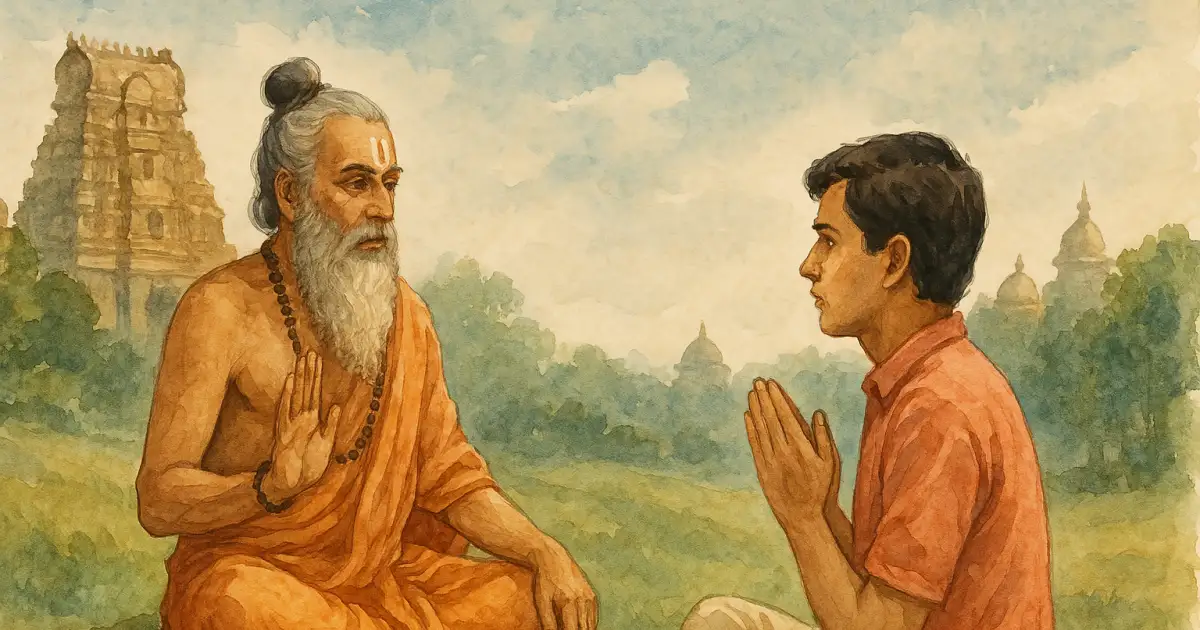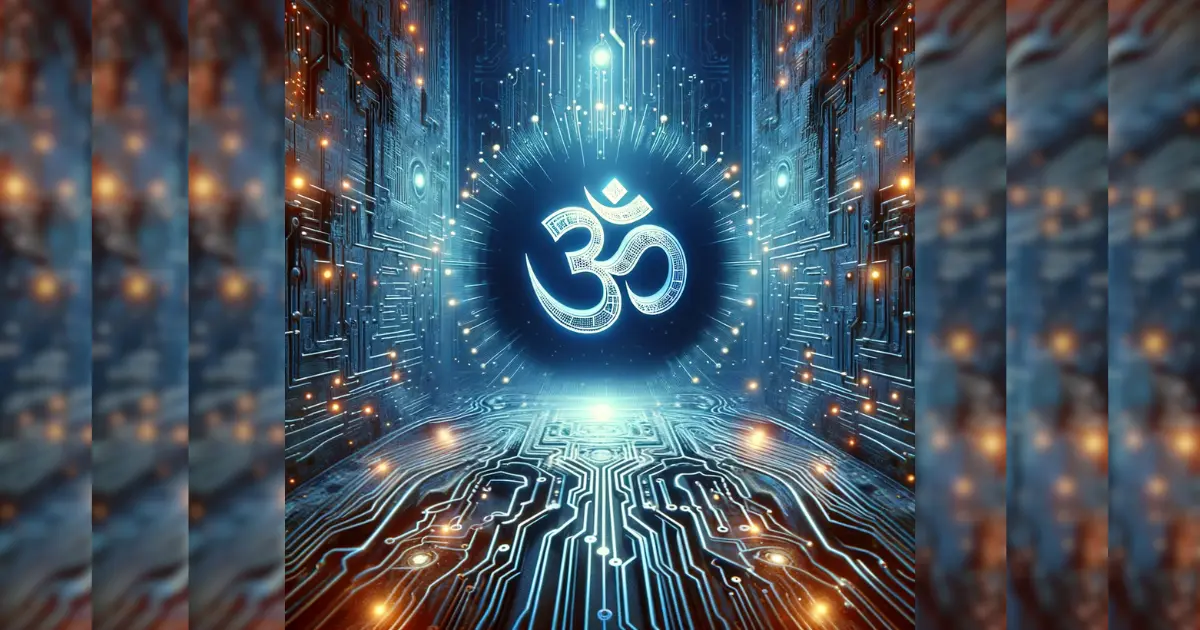Introduction: Physics is Over?
Let us tell you a story. A story of confusion, geniuses, quantum physics, and a beautiful dialogue between the West and the East. A story that has Nobel Prize Winning scientists, Upaniṣads – and even romance. Ready to have your mind expanded and heart warmed? Let’s start.
William Thomson was a prominent 19th century British scientist. So prominent and influential that he became the first man of science to serve a term in the British House Of Lords. He was knighted by Queen Victoria for being one of the inventors of the transatlantic telegraph. He calculated the lowest possible temperature in the universe: -273.15°. A long and stellar list of achievements. And yet, today he’s known for a failed prediction made in 1900: “There is nothing new to be discovered in physics now. All that remains is more and more precise measurement.”
The next century would bring the relativity of Albert Einstein, the strange findings of quantum physics, and the uncertainty principle. The prediction, for all of William Thomson’s talents, aged like milk instead of wine. Some say this quote was actually uttered by Albert Michelson – a man who was no less esteemed. In fact he was the first American to win the Nobel Prize in Physics. The point stands:
Western science, built on reason, made a shocking discovery in the 20th century that rocked it to its core. The discovery: Reality rests on a substrate of weird.
Werner Heisenberg, a German physicist and a Nobel Prize winner, wrote: “Can nature possibly be so absurd as it seemed to us in these atomic experiments?”
The Newest Meets the Oldest
Heisenberg discovered the uncertainty principle, which shows that the more precisely you measure the position of a particle, the less precisely you can measure its momentum. And vice versa. A strange case: the closer you look, the less you see. Science promises clarity, but when things get pushed to their extremes, it leaves us hanging. In his essay “The Vedantic Vision,” Schrödinger writes:
“In a considerable number of cases logical thinking brings us up to a certain point and then leaves us in the lurch.”
Wait, why was Schrödinger, an Austrian physicist and another Nobel prize winner, reading the Vedānta? Because it helped him understand his strange findings in the quantum world. The western mind needed a “blood transfusion from eastern thought” – but those can be tricky. Schrödinger:
“We must beware of blunders – Blood transfusions always need great precaution to prevent clotting. We don’t wish to lose the logical precision that our scientific thought has reached.” But in the Vedantic Vision he found a different yet compelling sort of logic.
This is Schrödinger’s Vedantic Vision: “You can throw yourself flat on the ground, stretched out upon Mother Earth, with the certain conviction that you are one with her and she with you. You are as invulnerable as she is.” But how can a scientist believe that man is “invulnerable”?
We feel vulnerable as we think we’re separate from everyone and everything else. But Schrödinger says this thought is “produced by deception.” Just as the “many facets of a diamond” split the Sun into multiple images, “māyā” splits one life force into many different forms.
So much for the nature of the cosmos – let’s come down to Earth. And what’s more earthly than the emotion of love? But love too, for Schrödinger, was a mystical experience. While biologists were busy reducing everything, from motherly love to romantic lust, to a cocktail of chemicals, Schrödinger was elevating love to a quasi-religious experience in which the knots of the space-time fabric momentarily break free.
From his diary:
“Love a girl with all your heart and kiss her on her mouth: then time will stand still & space will cease to exist.”
Now here’s the interesting part – an ancient Indian text made a very similar point thousands of years ago. Note the striking similarity between Schrödinger’s diary entry and the following verse from Bṛhadāraṇyaka Upaniṣad:
“In the same way as a man in the arms of a beloved woman knows nothing of the difference between the internal and external world, somebody who is immersed in the fully lucid ātman knows nothing of the difference between the internal and external world. He is in the blissful state wherein any desire is fulfilled (…) wherein there is no desire any longer.”
Schrödinger’s interest in Vedānta rubbed off on his friends. His girlfriend wrote in a breakup letter: “I looked into your eyes and found that spirit which you said was no more you or me, but us, One mind, One being. You can love me all your life, but we are Two now, not One.”
Consciousness: The Ultimate X Factor
The modern mind trusts the reality under microscopes. The ancient Hindu mind trusted the reality behind closed eyes. But what can consciousness turned on itself learn? Planck, a quantum physicist, would say: a lot. Here’s Planck on consciousness:
“I regard consciousness as fundamental. I regard matter as derivative from consciousness. We cannot get behind consciousness. Everything that we talk about, everything that we regard as existing, postulates consciousness.”
For Plank, faith was not the enemy of science. Rather, faith was integral to the health and success of science. Plank wrote that the “entrance to the gates of the temple of science” are etched with these words: “Ye must have faith.” The “pure rationalist” has no place in the scientific enterprise. Imagination, visions, and faith are “indispensable” to success in the realm of science.
Walter Moore, a 20th century biographer who wrote the “best book available today on the life and work of Schrödinger,” explains how quantum mechanics changed our picture of reality and made it more…vedāntika:
“The unity and continuity of Vedānta are reflected in the unity and continuity of wave mechanics. In 1925, the world view of physics was a model of a great machine composed of separable interacting material particles. During the next few years, Schrödinger and Heisenberg and their followers created a universe based on superimposed inseparable waves of probability amplitudes. This new view would be entirely consistent with the vedāntika concept of All in One.”
Conclusion
Dear reader, are you familiar with the Lindy Effect? Some things – most things – age in a linear fashion. The longer a human being has been around, the shorter his remaining expected lifespan. The same idea would apply to a mobile phone, a bridge, and a business. People age, processes decay, motivations disappear – and things fall apart. But the Lindy Effect has noticed that exceptions exist to this trend. For example: books. If a book has only been around for 10 years, who knows if it will be known 2000 years later? But if a book has been around for 2000 years, then we can be reasonably sure that 2000 years later people would still know about it. The older a book, the longer its remaining lifespan.
And the same could apply to ideas.





